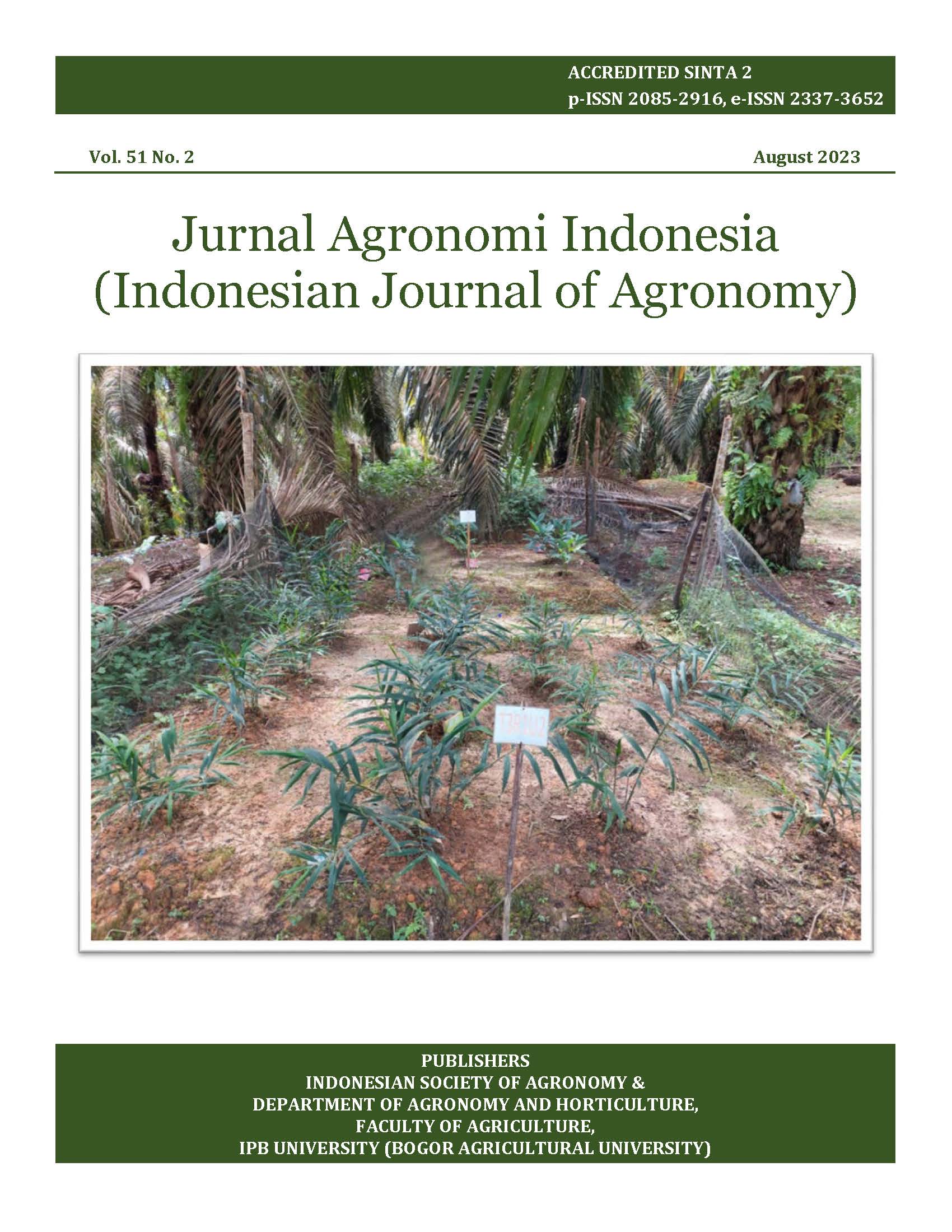Morphological traits and Zn content of several cassava genotypes in nutrient solution culture
Abstract
Leaf morphological characters and nutrient content in leaf tissue can vary depending on plant genotype. The nutrient solution culture can produce leaves with good nutritional content. Therefore, this research aimed to evaluate and validate cassava putative mutants' morphological traits and Zn content using a nutrient solution culture system. This research was carried out from January to May 2022 at the greenhouse of Cikabayan Experimental Garden, IPB University, Bogor. This study used two cassava cultivars and ten mutant genotypes from the cassava research team of IPB University, resulting from mutation breeding by gamma irradiation. The plant characters observed in this study included the number of leaves, length and width of the leaflet, leaf colour, plant height, fresh and dry weight leaf, and analysis of Zn content. The data were analyzed using ANOVA at a significant level of α = 5%, followed by Tukey's further test. The results showed that the G2D1-422 genotype had a higher Zn content than the wild type (Ratim/G2) and the other genotypes. The high Zn genotypes (G2D1-422) and low Zn genotypes (Ratim (G2) had not significantly different in fresh and dry leaf weight. Meanwhile, the plant genotype did not affect other growth characteristics such as plant height, the number of leaves, and the length and width of the leaflets, and overall, the characters were similar between the observed genotypes.













